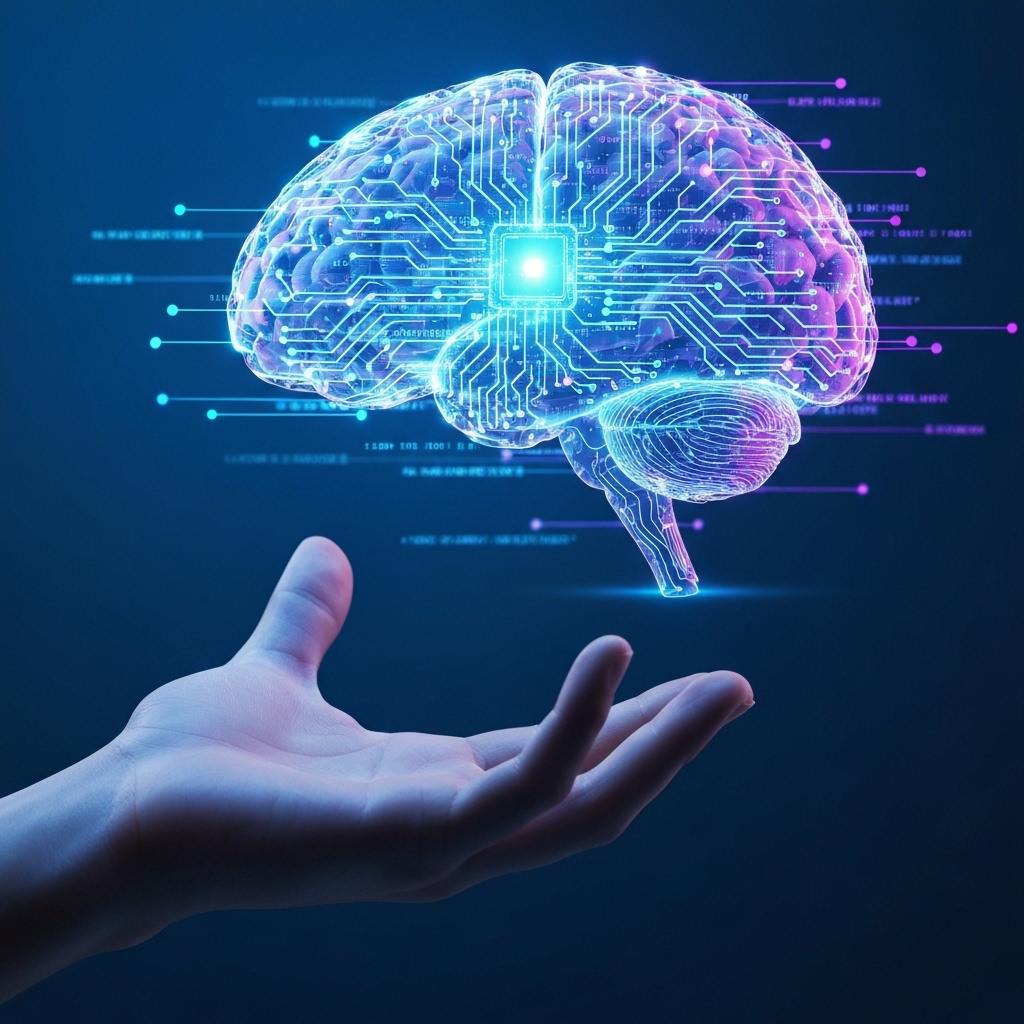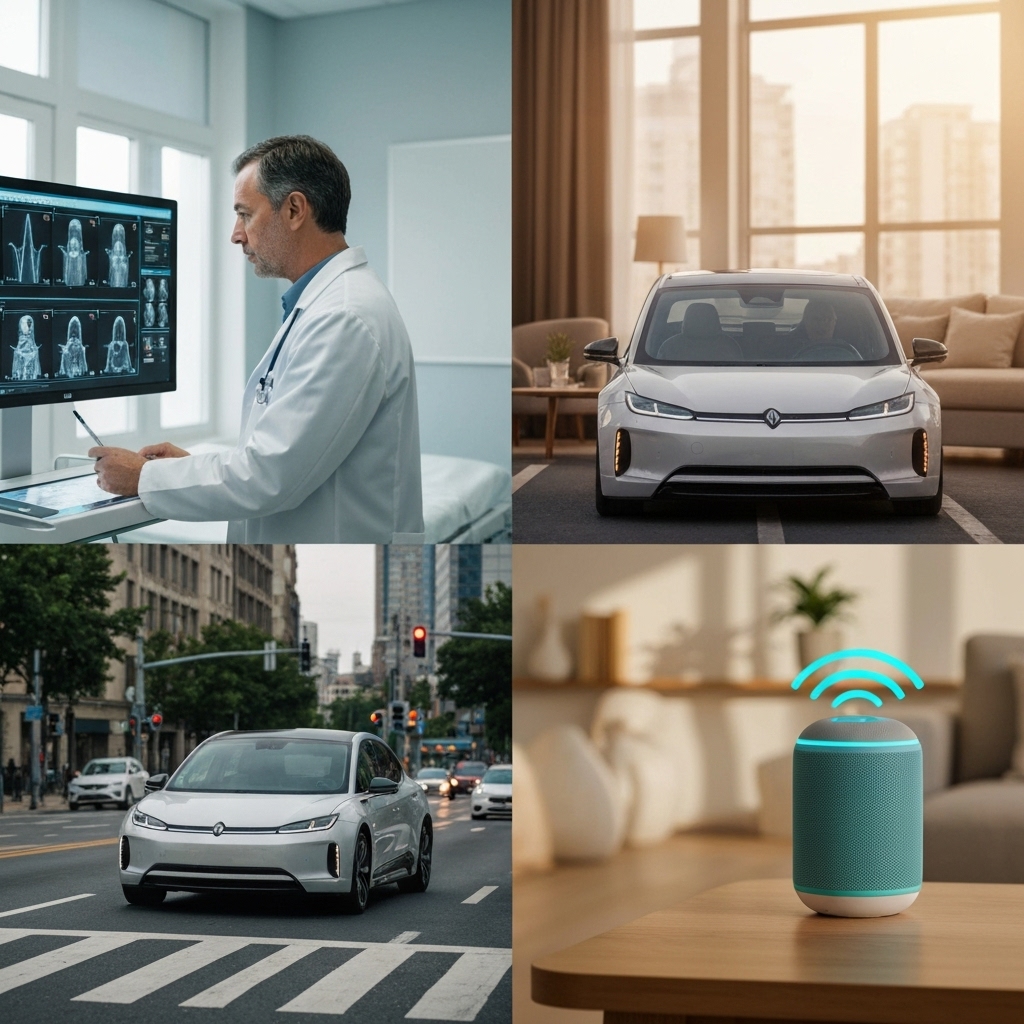Beginner’s Guide to Artificial Intelligence: Simple Introduction to AI for Everyone
Beginner’s Guide to Artificial Intelligence Explained: A Simple Introduction to AI for Everyone
Artificial Intelligence (AI) refers to the simulation of human intelligence in machines that are programmed to think, learn, and perform tasks typically requiring human cognition. These tasks include problem-solving, language understanding, recognizing patterns, and making decisions. Today, AI powers a wide range of technologies we use daily, such as virtual assistants like Siri and Alexa, which respond to voice commands, and navigation apps like Google Maps that optimize routes based on traffic conditions.
One of the most common applications of AI is in recommendation systems used by platforms such as Netflix and Amazon. These systems analyze user behavior—like viewing history or past purchases—to suggest content or products tailored to individual preferences. This personalization improves user experience and increases engagement, demonstrating how AI enhances efficiency and convenience in digital services.
At its core, AI relies on algorithms and large datasets to "learn" from examples—a process known as machine learning. Unlike traditional software that follows fixed rules, AI models improve over time as they are exposed to more data. For instance, email services like Gmail use AI to filter spam by recognizing patterns in millions of messages, constantly refining their accuracy. Organizations like MIT and Stanford University offer extensive resources for those interested in understanding the technical foundations of these systems.
Understanding AI is increasingly important because it influences industries ranging from healthcare to transportation. As AI continues to evolve, it raises both opportunities and ethical considerations, such as data privacy and job automation. However, for beginners, grasping the basic principles helps demystify the technology and empowers individuals to engage with AI responsibly and knowledgeably in an ever-automating world.
What Is Artificial Intelligence?
Artificial Intelligence (AI) enables machines to simulate human-like cognitive abilities, such as learning, reasoning, and decision-making. By leveraging algorithms and large datasets, AI systems can improve over time through experience, a process often referred to as machine learning. This capability allows AI to adapt to new inputs and perform complex tasks like image recognition and predictive analytics. For more information on how machine learning works, visit IBM's introduction to machine learning.
Natural language processing (NLP) is another key component of AI, allowing computers to understand, interpret, and generate human language. This technology powers virtual assistants like Siri and Alexa, as well as customer service chatbots. NLP combines computational linguistics with machine learning models to bridge the communication gap between humans and machines. The advancements in this field are detailed by resources at Harvard Business Review.
AI also excels in pattern recognition and problem-solving, making it valuable across industries such as healthcare, finance, and transportation. For example, AI-driven diagnostic tools can analyze medical images to detect diseases like cancer with high accuracy. These systems support professionals by providing data-driven insights, increasing efficiency and reducing human error. Learn about real-world AI applications from McKinsey & Company’s AI research.
While AI aims to augment or sometimes replace human effort in specific domains, it operates within predefined boundaries and lacks true consciousness. Ethical considerations, transparency, and bias mitigation remain critical challenges in AI development. Organizations like the Partnership on AI work to ensure responsible AI deployment, promoting fairness and accountability in intelligent systems.

Types of Artificial Intelligence
Narrow AI, often referred to as Weak AI, represents the current state of artificial intelligence technology. These systems are designed to perform specific tasks with high efficiency, such as voice recognition through virtual assistants like Siri or Alexa, recommending content on platforms like Netflix, or detecting fraudulent transactions in banking systems. Despite their sophistication in specialized areas, Narrow AI systems do not possess self-awareness or general cognitive abilities—they operate strictly within the boundaries they are programmed for.
Examples of Narrow AI include image recognition programs used in medical diagnostics and autonomous vehicles that rely on sensor data to navigate roads. While these applications demonstrate remarkable capabilities, they require extensive training on large datasets and cannot transfer their knowledge to unrelated tasks. For instance, an AI trained to play chess cannot use that experience to compose music or understand natural language without being retrained from scratch.
In contrast, General AI—also known as Strong AI—remains a theoretical concept. This form of AI would possess human-like cognitive abilities, enabling it to reason, solve problems, and adapt across diverse domains autonomously. Unlike Narrow AI, General AI could learn new skills without explicit programming and apply prior knowledge to unfamiliar situations. Researchers have not yet achieved this level of artificial intelligence, and significant ethical and technical challenges remain. Organizations like the Future of Life Institute emphasize the importance of responsible development should General AI ever become feasible.
The distinction between Narrow and General AI is crucial for understanding both the potential and limitations of today’s AI systems. While advancements continue at a rapid pace, all existing AI applications fall under the Narrow AI category. As research progresses, the long-term goal of achieving General AI prompts ongoing discussion among scientists, policymakers, and ethicists about safety, regulation, and the societal impact of such transformative technology.
How Does AI Learn? Machine Learning Explained
Machine learning is a core component of modern artificial intelligence, enabling systems to improve their performance over time by learning from data rather than relying on predefined rules. This approach allows computers to uncover complex patterns and relationships within large datasets, making it possible to perform tasks such as image recognition, language translation, and predictive analytics. Unlike traditional programming, where every decision is explicitly coded, machine learning models adapt and refine their understanding through exposure to examples.
One of the most common applications of machine learning is in computer vision, where algorithms are trained to recognize objects in images. For instance, by analyzing thousands of photos labeled as containing cats or not, a model can learn the distinguishing features of feline faces and bodies. Over time, it becomes proficient at identifying cats in new, unseen images with high accuracy. This process relies heavily on techniques like supervised learning, where the model learns from input-output pairs provided during training.
The success of machine learning depends on both the quality and quantity of data available for training, as well as the design of the algorithm itself. Models such as neural networks, particularly deep learning architectures, have achieved state-of-the-art results across many domains due to their ability to capture intricate patterns in data. For more information on how these models work, resources from institutions like MIT and research organizations like Google Research provide detailed insights into current advancements and methodologies.

Real-World Applications of AI
Artificial intelligence is rapidly reshaping industries by automating complex tasks and improving decision-making processes. In healthcare, AI-powered tools analyze medical images such as X-rays and MRIs with remarkable precision, often detecting conditions like tumors or fractures earlier than traditional methods. Systems like those developed by IBM Watson Health demonstrate how machine learning can support radiologists and improve patient outcomes through faster, more accurate diagnoses.
The transportation sector has also seen significant advancements thanks to AI, particularly in the development of autonomous vehicles. Companies like Waymo and Tesla use deep learning algorithms and sensor data to enable cars to perceive their surroundings, make real-time decisions, and navigate safely without human input. These innovations aim to reduce traffic accidents caused by human error and increase mobility for individuals who cannot drive.
In customer service, AI-driven chatbots powered by natural language processing handle thousands of inquiries daily, providing instant responses and freeing up human agents for more complex issues. Platforms such as ServiceNow integrate AI to streamline support operations across industries. Meanwhile, smart home devices like Amazon Echo and Google Nest use voice recognition to control lighting, temperature, and security systems, bringing unprecedented convenience to everyday life.
By enhancing efficiency, reducing errors, and enabling new levels of automation, AI continues to transform how we live and work. As these technologies evolve, their integration into mainstream applications promises even greater improvements in accuracy and user experience across multiple domains.

Conclusion: Embracing AI with Confidence
Understanding artificial intelligence (AI) is becoming increasingly important in our rapidly evolving digital world, but you don’t need a computer science degree to get started. With just a curious mindset and a willingness to learn, anyone can begin to grasp the fundamental concepts behind AI. From virtual assistants like Siri and Alexa to recommendation systems on platforms like Netflix and Spotify, AI is already embedded in everyday life. Resources such as Encyclopedia Britannica offer accessible overviews that break down complex topics into understandable pieces for non-experts.
AI technologies rely on data, algorithms, and machine learning models to recognize patterns and make decisions—often improving over time without being explicitly programmed for each new task. While the inner workings can be intricate, the core idea is simple: machines can be trained to perform tasks that typically require human intelligence. For those interested in a deeper dive, organizations like MITRE provide public educational content that explains AI principles in clear, jargon-free language.
As AI continues to influence industries ranging from healthcare to finance, having a foundational understanding helps individuals make informed decisions—both personally and professionally. It also fosters critical thinking about ethical considerations, such as bias in algorithms and data privacy. Reputable sources like The National Institute of Standards and Technology (NIST) offer insights into how AI is being standardized and regulated to ensure safety and fairness.
Whether you're exploring AI out of personal interest, academic pursuit, or career development, the journey begins with curiosity. Countless online courses, articles, and interactive tools are available to guide beginners through the basics. By taking that first step—like reading this article—you’re already building awareness in a field that will shape the future. Staying informed doesn’t require mastery; it simply requires engagement.
